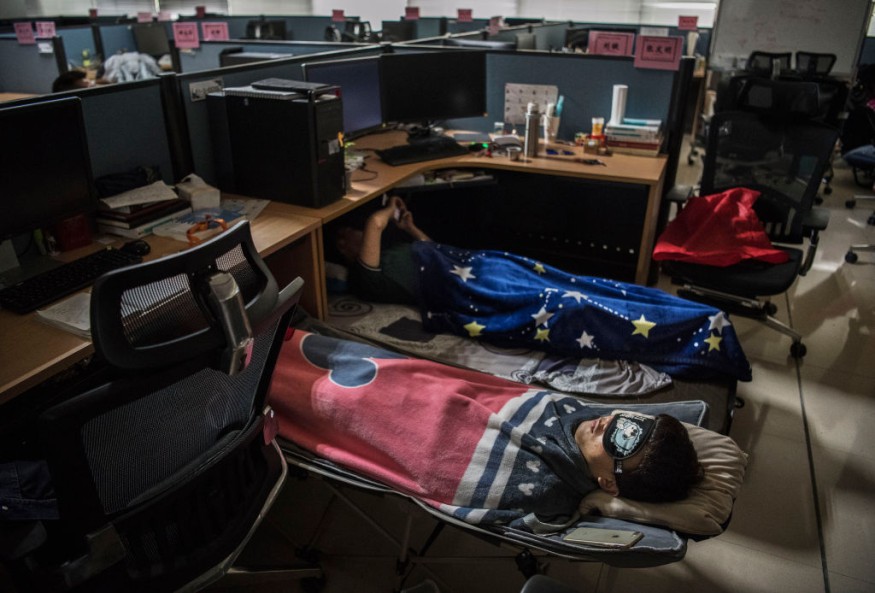Imagine this: Things are going your way all day, you've finished work and putting the children to bed, and you're going to sleep early, miraculously. You say, "I'll finally get the sleep I deserve tonight, and I've needed it for so long." Then you wake up alert and ready to continue your day. You have a peek at the time: 1 am. Sounds bad, huh? As it turns out, before not so long ago, that was natural.
An increasing body of anthropological research strongly indicates that sleeping in two shorter "bursts," twice every night, was deemed natural and stable until the 18th Century in Europe.
This is confirmed by the 16-year research by historian Roger Ekirch, which shows more than 500 historical facts from court accounts, diaries, literature, news and art concluding the same.

What Was it Like Sleeping Twice a Day?
Jan Saenredam's 1595 print is the proof of night action, says Roger Ekirch. His book At Day's Close: Night in Times Past, uncovers over 500 references in Europe, Africa and the Americas to a segmented sleeping pattern.
There were no preset bedtimes, just an absolutely crossed-off to-do list that decided when the day was finished. The first sleep began at dusk, preceded by a wakeful time between around midnight and 2 a.m. In general, the wake time between sleeps lasted between 1-3 hours.
In reality, the afternoon siesta (what we call 'naps') continues to this day in several regions of Spain. It's not exactly the bi-phasic sleep habits of yesteryear, but it's an age holdover. Also, naps may provide major memory and cognitive effects and improve our overall health and energy levels as well.
When One Became Two Nights
The single night of sleep started at the start of the Industrial Revolution, beginning with the barons of Europe's manufacturing and matriculating to the Americas across the Atlantic. What changed, then?
The night was really "dark and full of terrors," before the dawn of street lighting and power, violence was common in villages, and so most would go home when the sun fell. Simply stated, after the sun was down, there was little to do.
But in 1667, after Paris became the first city to light up its streets, the evenings became more accommodating, and activities started to take place in the dark in the upper classes of European cultural hubs. Later on, people were heading to bed.
The Industrial Revolution further instilled in humanity an "efficiency" mentality, and people started to feel that it was a waste of time to lay in bed at night.
A literature review at the time concluded that it was not until the late 19th century that references to "insomnia" begin to surface, right about the time our sleep was consolidated. The BBC notes that "the notion of a first and second sleep had entirely receded from our social consciousness by the 1920s."
No Rest For the Tired
The BBC cited Russell Foster, professor of circadian neuroscience at Oxford, saying many people wake up at night and panic. Foster usually correlates a throwback to the bi-modal sleep pattern in their experience.
As our capacity to instinctively alleviate mounting tension during a wakeful time, unhurried by the demands of modernity, has dropped by the wayside, this has led to the increase of depression, anxiety, drug addiction and alcoholism.
Now, What to Do?
Studies suggest adults who regularly sleep seven to eight hours a night live the longest," according to sleep specialist Timothy A. Connolly of St. Luke's Episcopal Hospital in Houston speaking to Everyday Health, "Further studies show that long, restful, unbroken sleep is better at our level.
Ekirch claims that artificial light and the desire of people for bi-phasal sleep lead to the increasing sleep issues in society. And, still, with the proliferation of electronics, LED lights, and displays, our normal sleep cycles are inhibited by illumination and stimulation, combined with our lives becoming more linked and active than ever. A broad spectrum of physical and behavioral problems and disorders are included among the consequences.
For decades, science has been systematically operating toward individuals having better sleep. Maybe science would therefore be responsible for offering the remedy and initiate changing sleep patterns.
ALSO READ : Short Nap vs Long Nap, What's Better?
Check out more news and information on Sleep Study on Science Times.
© 2025 ScienceTimes.com All rights reserved. Do not reproduce without permission. The window to the world of Science Times.










